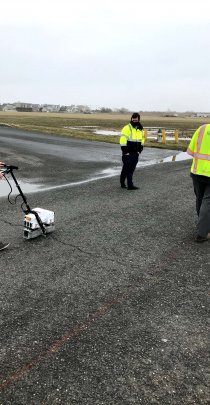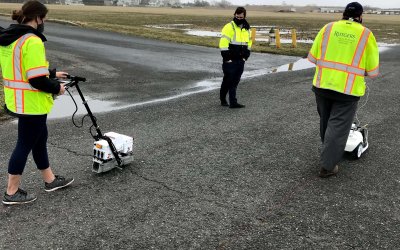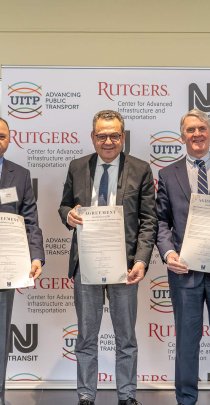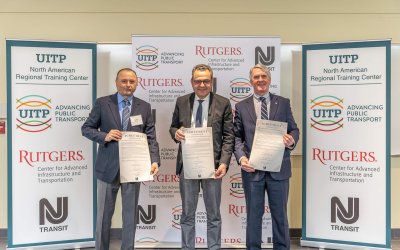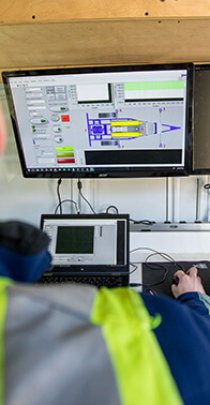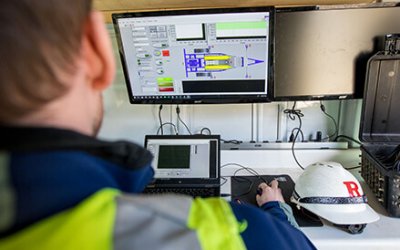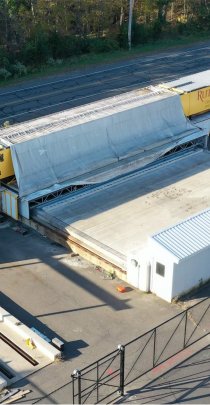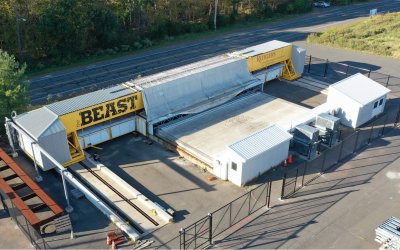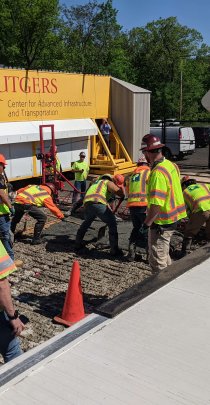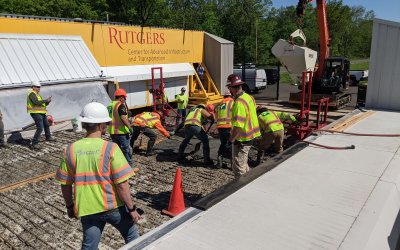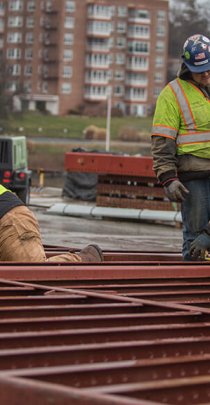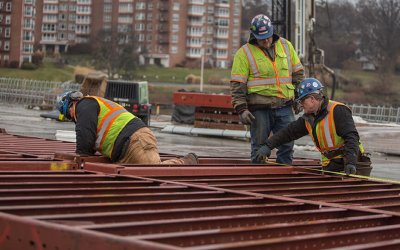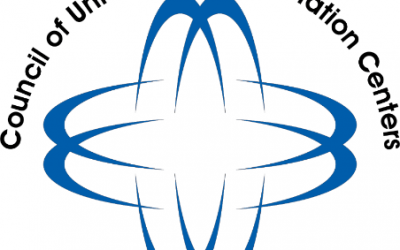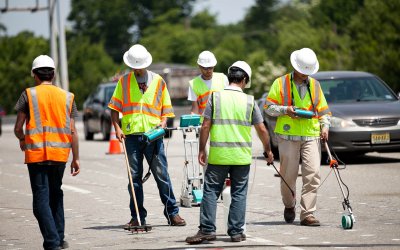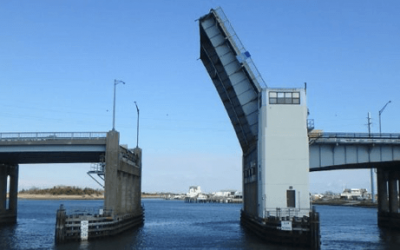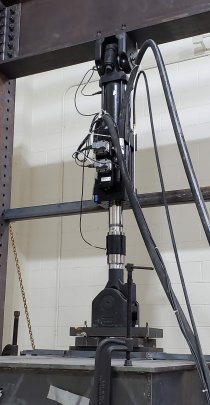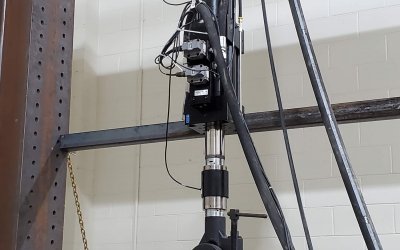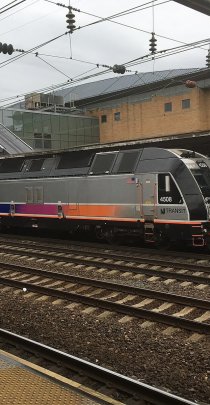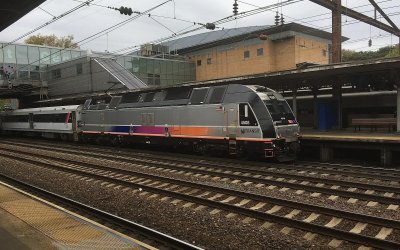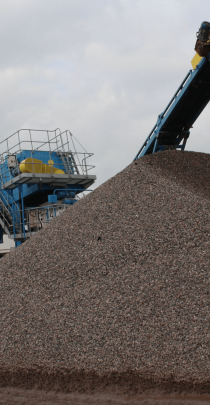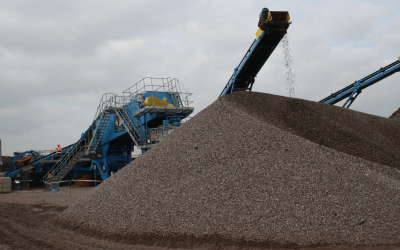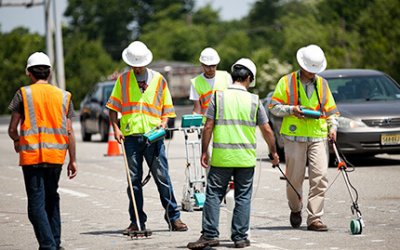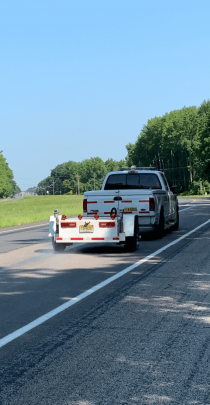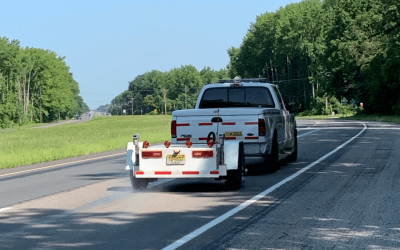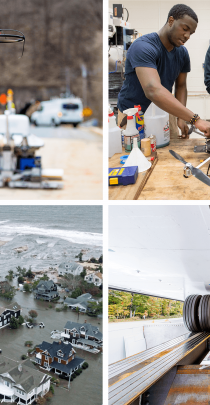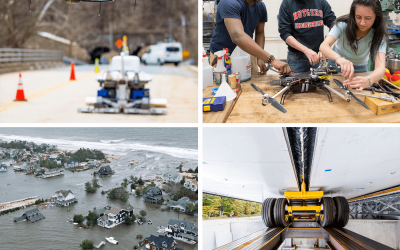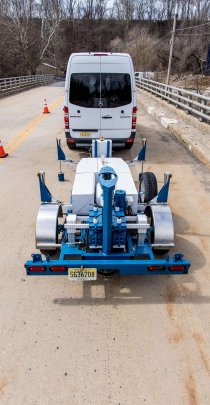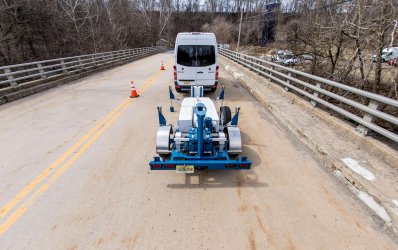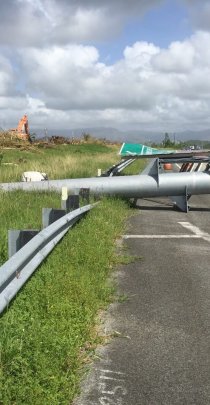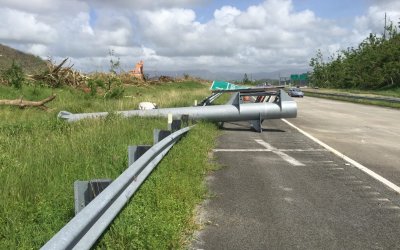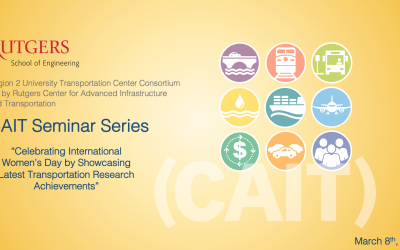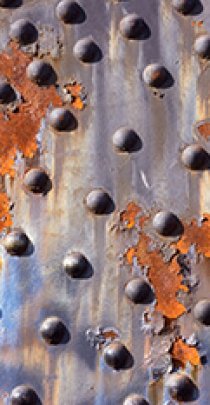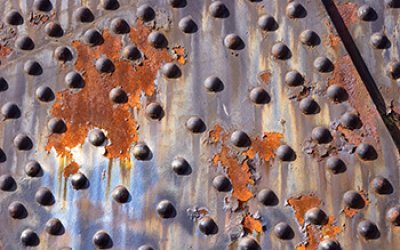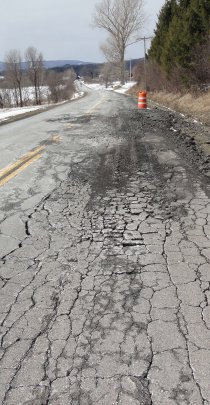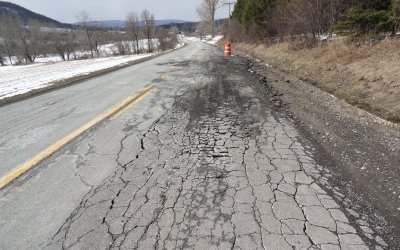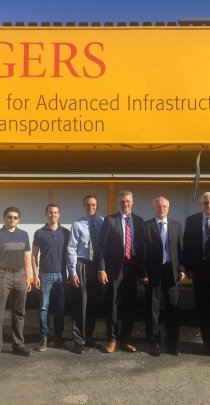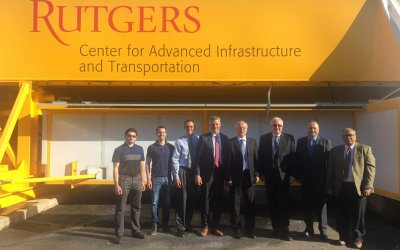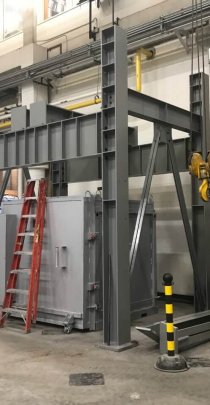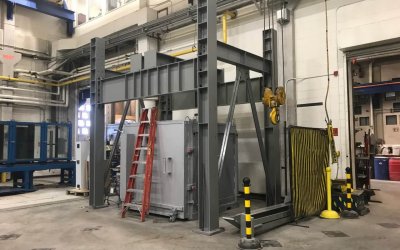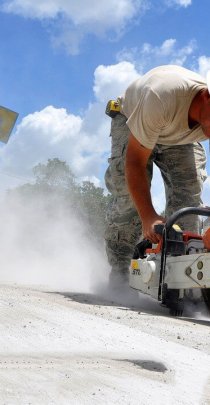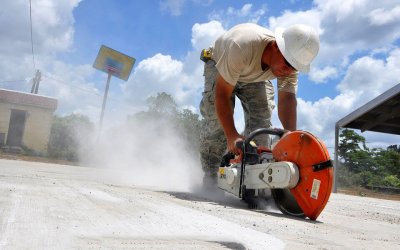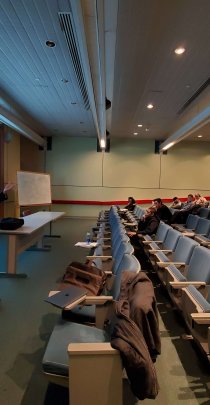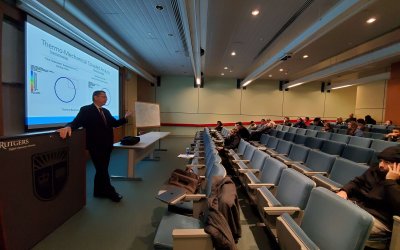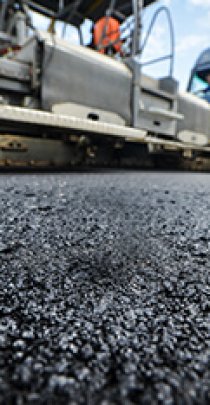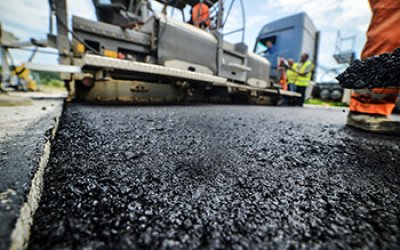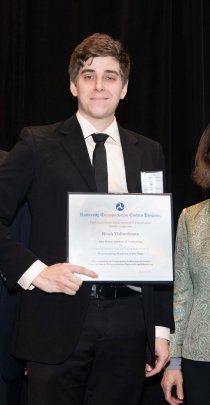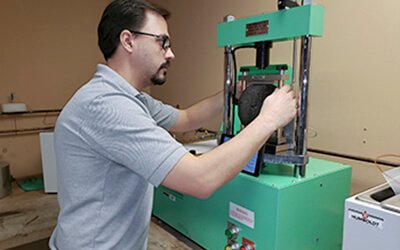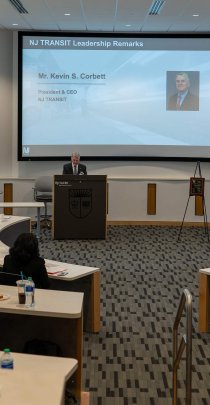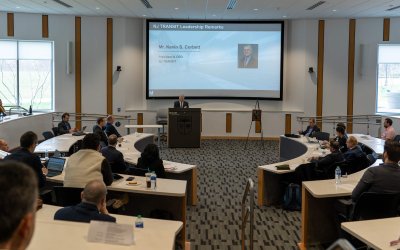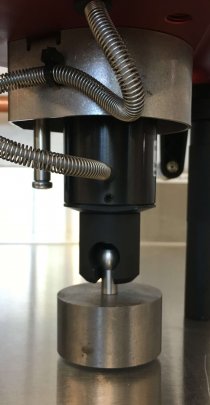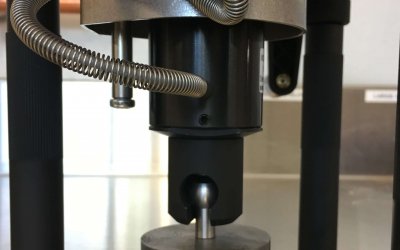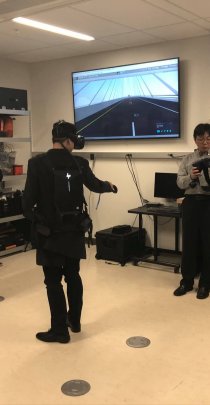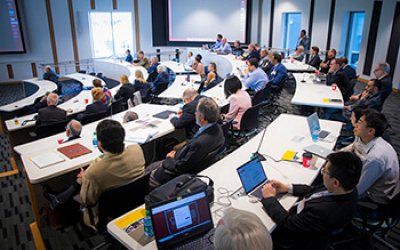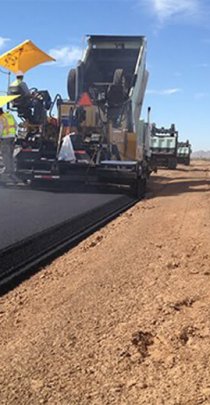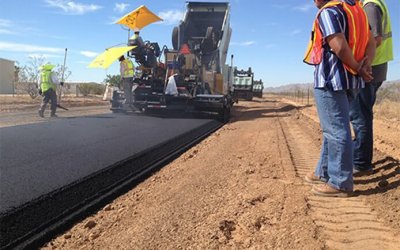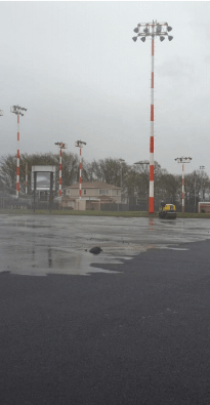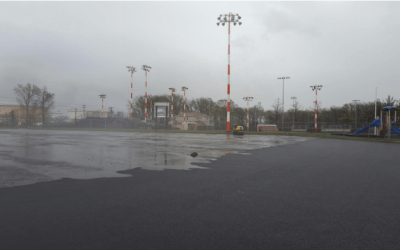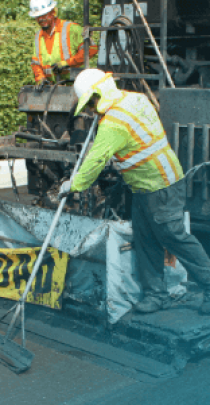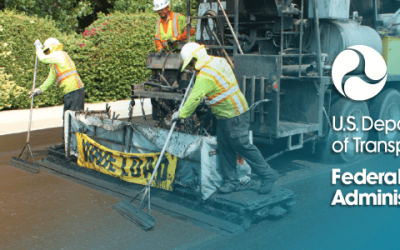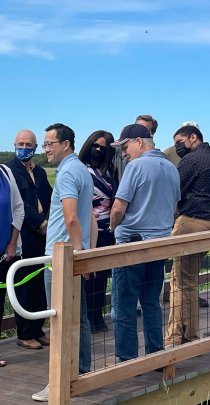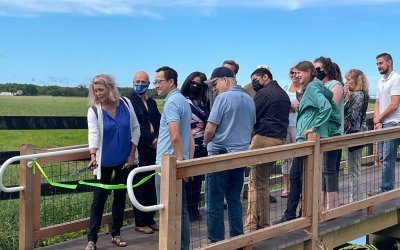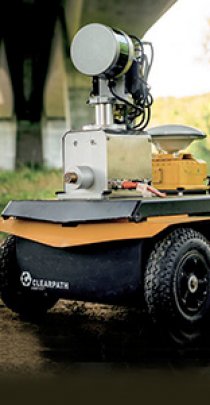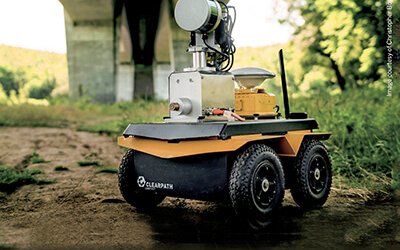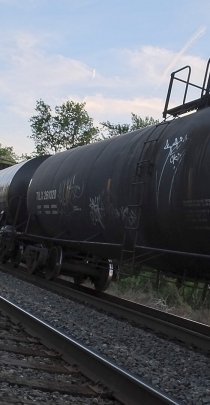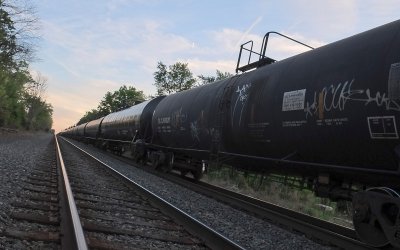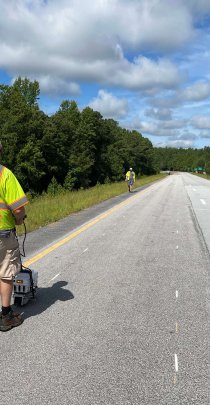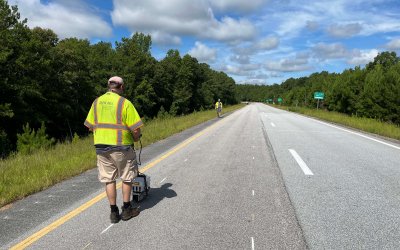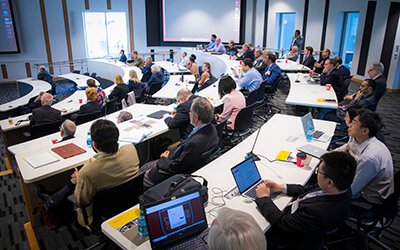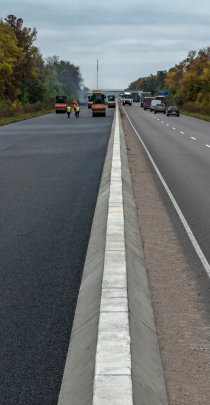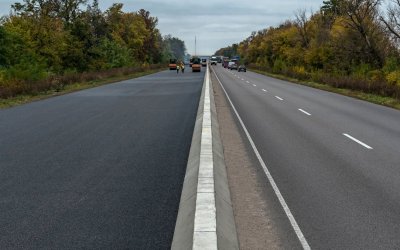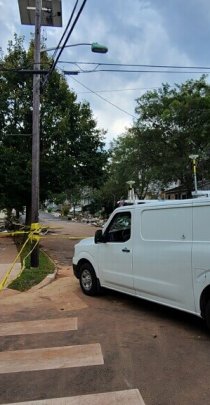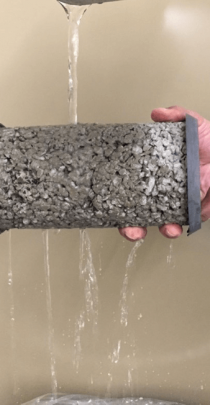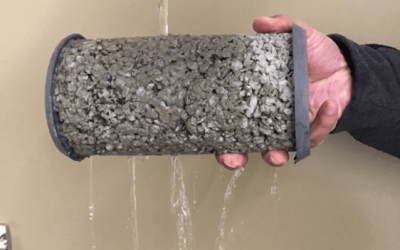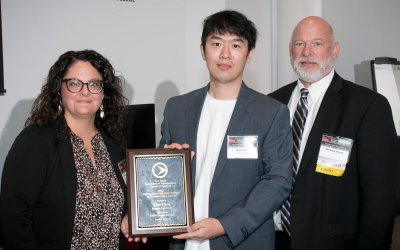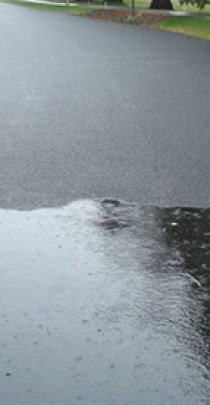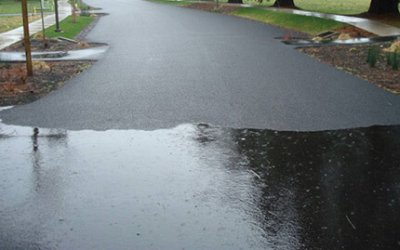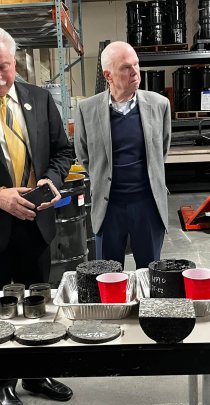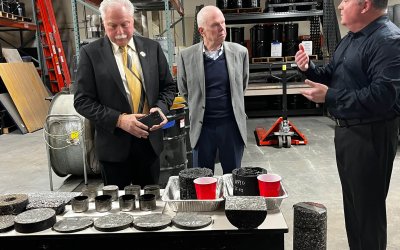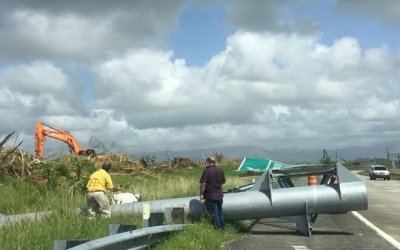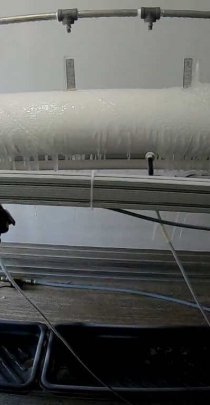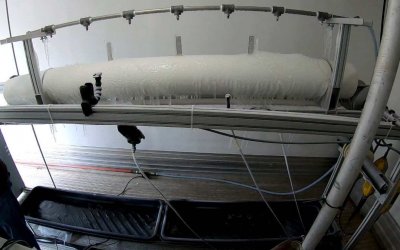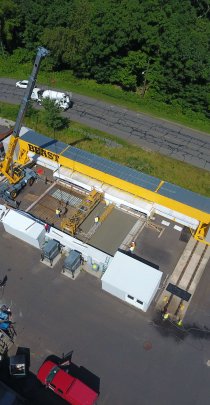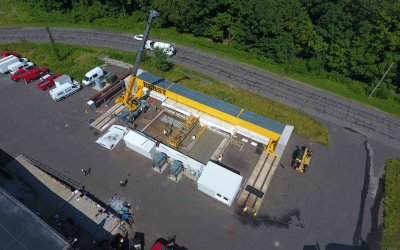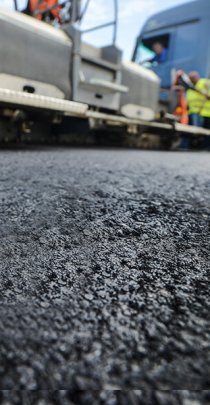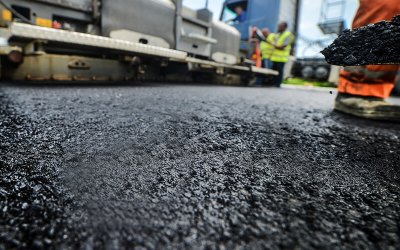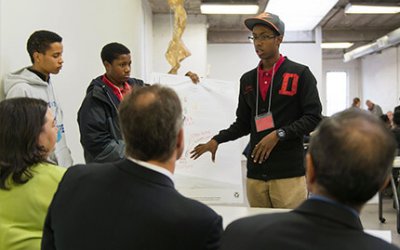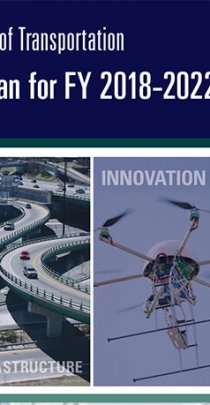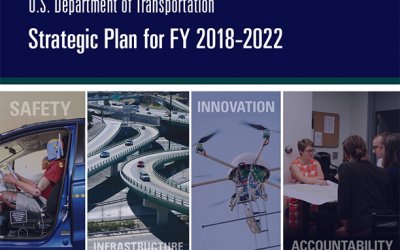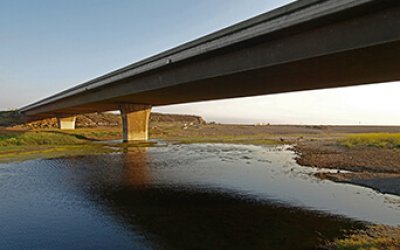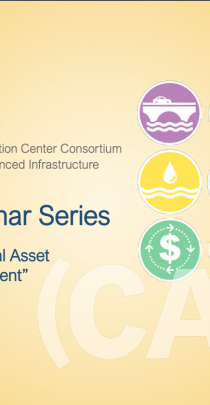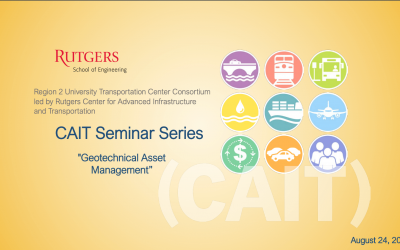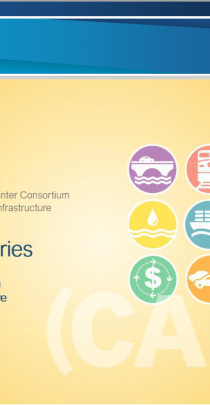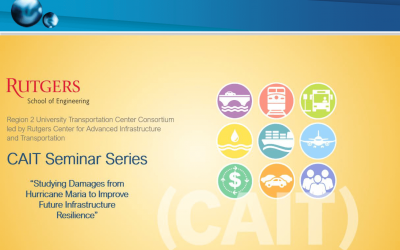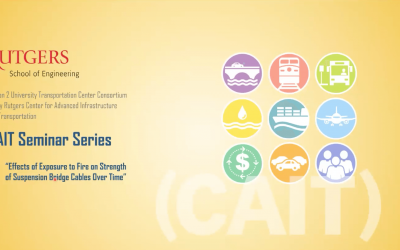Innovative materials, imaginative methods, lower costs. Engineers aspire to create transportation infrastructure that lasts 100 years or more. Meeting and exceeding the 100-year life span is one of CAIT’s primary pursuits.
Training & Events
NJLTAP - Pavement Management Systems (In-Person)
Pavement Management Systems provides the basics for developing a pavement management system to help local governments manage their pavement network by providing an understanding of the concept and importance of road surface inventories and condition surveys.
News
2022 Northeast Coastal Conference Highlights Resilience Work Since Superstorm Sandy
On the 10th Anniversary of Superstorm Sandy, the 2022 Northeast Coastal Conference brought together experts and industry leaders to discuss what we have learned, ongoing research and projects that are making our shores and coastal communities safer, and new ways we can continue to build a more resilient future.
CAIT Partners with NJ TRANSIT and International Association on Rail Training Center
A new center designed to educate the current and next generation of transportation leaders to be resilient to challenges of the 21st century has been established at Rutgers through a partnership with two industry leaders.
THMPER featured in Civil Engineering magazine
The February 2018 issue of CE magazine featured THMPER—a portable, rapid testing device for bridge load-bearing capacity. THMPER is a breakthrough because it does this critical task faster, cheaper, and with less traffic disruption than other current methods.
UHPC Bridge Preservation & Repair Research at The BEAST
CAIT's BEAST Lab has been testing a full-scale, 50-ft. bridge deck for a project sponsored by the FHWA to learn about how the bridge deteriorates under exposure to extreme environmental conditions and traffic loading — and to evaluate emerging bridge preservation technologies such as UHPC.
BEAST Lab Studies Innovative UHPC Material for Bridge Preservation & Repair
This summer, the BEAST Lab at Rutgers CAIT began to evaluate emerging bridge preservation technologies in addition to ongoing testing of a full-scale, 50-ft. bridge deck. Specifically, researchers started investigating UHPC to establish measurements of the material’s long-term performance under real-world conditions.
Building connections that last
FHWA is promoting ultra-high performance concrete to improve the strength, simplicity, and durability of prefabricated bridge element connections. This innovation builds on field experience of dozens of states in the U.S. since 2009.
Building the right roads for the right loads
David Orr from the Cornell University Local Roads Program is working on a tool to help towns with low-volume rural/local roads plan and build them in keeping with the traffic loads they carry.
Associate Director Elected Secretary of Council of University Transportation Centers
The Associate Director of CAIT, Dr. Patrick Szary, has served on the executive committee of CUTC previously as well as playing an instrumental role in both leading CAIT’s research in aligning with the national vision of USDOT while also engaging regional stakeholders and developing the Center as a dynamic resource.
CAIT Associate Director Elected CUTC VP for 2021-2022
Dr. Szary leads CAIT’s research efforts helping to align them with USDOT’s national vision and the needs of stakeholders in the Northeast region. He has been a member of CUTC’s executive board previously, most recently serving as Secretary last year.
CAIT Awarded $3.5 million from USDOT UTC program
Rutgers’ CAIT was awarded a $3.5 million grant from USDOT’s Research and Innovative Technology Administration under the University Transportation Center (UTC) program. This is the third time CAIT has successfully competed to retain its UTC status.
CAIT Awarded Bridge Resource Program to Support NJDOT Research
The BRP is aimed at preserving bridges in the state, enhancing the condition of key transportation infrastructure, and developing new technologies to help engineers build with resilience in mind.
CAIT Expands Large-Scale Testing Equipment for Bridge-Deck Development Research
Rutgers CAIT recently enhanced capability in large-scale structural-testing equipment that will enable full utilization of its existing laboratory infrastructure and expand its portfolio in transportation research by providing access to a capability that currently does not exist in any other university in NJ and the region.
CAIT pavement crew wants agencies to join the RAAT-Pack
Modern asphalt pavement performance testing has evolved quickly. The physical testing procedures are relatively simple, but analyzing the collected data is complex and intensive. If you’re an asphalt technician or engineer, that’s where RAAT-Pack has your back.
Best Practices for Deploying Real-Time Traffic Signal Performance Monitoring
Traffic congestion costs the US billions each year in productivity as commuters find themselves stuck on the nation’s crowded roadways. As more people use the transportation system, investment in innovative, intelligent technology is needed to ensure that current infrastructure can support the growing need.
CAIT Research Helps NJ Transit Secure Funding for State of Good Repair Projects
The FRA issued a notice of funding opportunity for state of good repair projects including a total of $291.4 million in grant funding to help repair vital intercity passenger rail assets. Of that funding, NJ Transit was later awarded $18.3 million to upgrade the Trenton Transit Center, and CAIT helped to secure it.
CAIT Research Provides Guidelines on Recycled Concrete Aggregate Implementation
Due to how it is sourced and produced, the mechanical properties and characteristics of Recycled Concrete Aggregate can vary greatly. As demand for this material grows, it is important for the construction industry to understand the nature of RCA and how it can be applied to different projects.
CAIT Researcher Speaks on the State-of-the-Art in NDE and Bridge Assessment Tech
On September 16th from 2-3 pm, Rutgers Center for Advanced Infrastructure and Transportation (CAIT) hosted affiliated researcher Dr. Nenad Gucunski for a presentation on the state-of-the-art in the use of Nondestructive Evaluation and other technologies for the comprehensive assessment of concrete bridges.
CAIT Researcher Wins ASCE Huber Prize Recognizing His Research Achievements
The Walter L. Huber Civil Engineering Research Prizes are awarded to ASCE members for notable achievements in research related to civil engineering. Dr. Hao Wang was recognized by ASCE with a Huber Prize this year for his innovative research developing durable and smart pavement systems.
CAIT Researchers Featured for Innovative ‘Engineering Advances’ Across New Jersey
CAIT researchers have been driving advanced engineering solutions into practice here in NJ. A few experts at CAIT were highlighted by NJBIZ last month in an article on "Engineering Advances."
CAIT Researchers Test HFST Across NJ for Performance and Service Life
A report from CAIT researcher Dr. Thomas Bennert, in collaboration with stakeholders from NJDOT, tests the performance of existing High Friction Surface Treatment installations at locations in New Jersey, as well as the viability of alternatives such as High Friction Chip Seal for areas showing signs of premature failure.
CAIT Researchers Turn Damage from Hurricane Maria into Actionable Resilience Data
In the years following the devastation that Hurricane Maria caused for Puerto Rico, CAIT-affiliated researchers at PUPR have been collecting field data from damaged traffic signs and bridges, testing these transportation assets to better understand their structural failures and breaking points during the storm.
CAIT chosen to lead USDOT Region 2 University Transportation Center
The Region 2 UTC consortium is focusing on developing practical tools and methods to improve infrastructure health, durability, and resilience. Partners are: Atlantic Cape Community College, Columbia, Cornell, NJIT, Polytechnic University of Puerto Rico, Princeton, Rowan, SUNY–Farmingdale, and University at Buffalo.
Effects of Exposure to Fire on Strength of Suspension Bridge Cables Over Time
On December 9th from 2-3 pm, CAIT-affiliated researchers will give a webinar on "Effects of Exposure to Fire on Strength of Suspension Bridge Cables Over Time" as part of the ongoing CAIT Seminar Series.
CAIT Seminar Series: Enhancing the Resilience of Tunnels Subject to Fire Events
On Thursday, February 25th, Rutgers CAIT will host UTC partners at the University at Buffalo for a seminar discussing their latest research quantifying damage to concrete tunnel lining during fire events in order to recommend proper mitigation actions and improve overall resilience of tunnels.
CAIT Seminar Series: State-of-the-Art in the Use of Nondestructive Evaluation
On Wednesday, September 16th, from 2-3 pm, Rutgers Center for Advanced Infrastructure and Transportation (CAIT) will host the next installment of its ongoing seminar series on the state of the art in nondestructive evaluation (NDE) and other technologies for the assessment of concrete bridges.
Studying Damages from Hurricane Maria to Improve Infrastructure Resilience
On January 29th, 2021, from 2-3 pm EST CAIT will host UTC partners from the Polytechnic University of Puerto Rico for a seminar on their latest research studying damages from Hurricane Maria to improve future infrastructure resilience.
CAIT Update, April 2021
News from the USDOT Region 2 University Transportation Center led by Rutgers CAIT.
CAIT Update, April 2022
News from the USDOT Region 2 University Transportation Center led by Rutgers CAIT.
CAIT Update Enews, August 2019
News from the USDOT Region 2 University Transportation Center led by Rutgers Center for Advanced Infrastructure and Transportation. Includes stories on recent events, research, and faculty accomplishments and activities.
CAIT Update, August 2020
News from the USDOT Region 2 University Transportation Center led by Rutgers CAIT.
CAIT Update, December 2019
News from the USDOT Region 2 University Transportation Center led by Rutgers CAIT.
CAIT Update, December 2020
News from the USDOT Region 2 University Transportation Center led by Rutgers CAIT.
CAIT Update, December 2021
News from the USDOT Region 2 University Transportation Center led by Rutgers CAIT.
CAIT Update, December 2022
News from the USDOT Region 2 University Transportation Center led by Rutgers CAIT.
CAIT Update, February 2020
News from the USDOT Region 2 University Transportation Center led by Rutgers CAIT.
CAIT Update, February 2021
News from the USDOT Region 2 University Transportation Center led by Rutgers CAIT.
CAIT Update, February 2023
News from the USDOT Region 2 University Transportation Center led by Rutgers CAIT.
CAIT Update, January 2020
News from the USDOT Region 2 University Transportation Center led by Rutgers CAIT.
CAIT Update Enews, July 2019
News from the USDOT Region 2 University Transportation Center led by Rutgers Center for Advanced Infrastructure and Transportation. Includes stories on recent events, research, and faculty accomplishments and activities.
CAIT Update, July 2020
News from the USDOT Region 2 University Transportation Center led by Rutgers CAIT.
CAIT Update, July 2021
News from the USDOT Region 2 University Transportation Center led by Rutgers CAIT.
CAIT Update, Jun 2020
News from the USDOT Region 2 University Transportation Center led by Rutgers CAIT.
CAIT Update, June 2021
News from the USDOT Region 2 University Transportation Center led by Rutgers CAIT.
CAIT Update Enews, May 2019
News from the USDOT Region 2 University Transportation Center led by Rutgers Center for Advanced Infrastructure and Transportation. Includes stories on recent conferences, research, and faculty accomplishments and activities.
CAIT Update, April 2020
News from the USDOT Region 2 University Transportation Center led by Rutgers CAIT.
CAIT Update, November 2019
News from the USDOT Region 2 University Transportation Center led by Rutgers CAIT.
CAIT Update, November 2020
News from the USDOT Region 2 University Transportation Center led by Rutgers CAIT.
CAIT Update, October 2019
News from the USDOT Region 2 University Transportation Center led by Rutgers CAIT.
CAIT Update, October 2022
News from the USDOT Region 2 University Transportation Center led by Rutgers CAIT.
CAIT Update, September 2019
News from the USDOT Region 2 University Transportation Center led by Rutgers CAIT
CAIT Update, September 2020
News from the USDOT Region 2 University Transportation Center led by Rutgers CAIT
CAIT Update, September 2021
News from the USDOT Region 2 University Transportation Center led by Rutgers CAIT.
CAIT Update, September 2022
News from the USDOT Region 2 University Transportation Center led by Rutgers CAIT.
CAIT Webinar Series: Geotechnical Asset Management
Retaining walls, embankments, slopes, and subgrades are types of geotechnical assets that can adversely influence the performance of transportation and other infrastructure systems, particularly with increasing age as deterioration and the consequences from deferred maintenance are realized.
Celebrating International Women's Day 2021
The way that we think about and use transportation as it exists today has been shaped by innovative women leaders throughout history. They have contributed greatly to the safety of all modes of travel, efficiency of our transportation systems, and the development of new technology that drives transportation into the future.
Celebrating Sweet 16 research
CAIT has a reputation for high-value research. One Rutgers-NJDOT Research Bureau study was selected in the AASHTO high-value research Sweet 16 competition. It identified a protocol to evaluate corrosion-inhibiting efficacy and durability of overcoatings for steel surfaces.
Cornell to Host Webinar on Thickness Design of Low-Volume Roadway Pavements
In June UTC partners at Cornell's Local Roads Program will host a free webinar on low-volume roadway pavements and how to use a new software they have developed to help local agencies do their own pavement designs.
Every Day Counts round five initiatives announced
FHWA acting administrator Brandye Hendrickson has announced the fifth round of the agency’s Every Day Counts (EDC) program, 10 selected proven, yet underutilized innovations to enhance safety, reduce congestion, shorten project timelines, and improve sustainability.
FHWA Executive Director Receives Prestigious Rutgers Medal of Excellence Award
Thomas D. Everett was honored for his service and received the prestigious Rutgers Engineering Society Distinguished Engineer Award earlier this month at The 2019 Medal of Excellence Awards Dinner. He stopped by CAIT for a tour of The BEAST and other facilities too.
Fire Engineering Expert Recognized by American Institute of Steel Construction
Primarily focused on the performance of structures under fire, Dr. Negar Elhami Khorasani is currently researching damage to concrete railway-tunnel lining during fire events, which can have millions of dollars of impact, through a UTC Fire in Tunnel Collaborative Project at CAIT.
Free webinar: OSHA standards for protecting workers against silica dust
OSHA Education Centers in Louisiana, Oklahoma, and Texas, are jointly hosting a free WebEx presentation on silica hazards from March 5 to 9, 2018. This is open to anyone in the country. It focuses on best prevention practices and silica standards compliance for construction and industry.
Generating power every time you hit the road
Rutgers researchers detail a potential system that can turn roads and bridges into sustainable “power plants” by harvesting the kinetic energy of vehicles using piezoelectric materials in pavement.
Grateful Patient Donation Enables CAIT Development of Novel Lead-Detection Technology
Grateful for the excellent medical care he received from Rutgers University physician, distinguished professor, and CAIT-affiliated researcher, Clifton R. Lacy, M.D., a New Jersey business leader has pledged an $8 million donation to fund multiple innovative public health projects at Rutgers.
Collaborative UTC Project Addresses Fires In Tunnels
The project is related to a recent presentation at the 2019 Graduate Seminar Series hosted by Rutgers Department of Civil and Environmental Engineering, where Mr. Joseph Englot, National Director of Infrastructure Security at HNTB, discussed alternative fuel vehicles, fire events, and more.
Long-runnning asphalt pavement conference still drawing crowds
At 62 years and counting, the region’s longest-running asphalt pavement conference was attended by nearly 320 pros from research, transportation agencies, and private industry.
Online tool with truly comprehensive data on 600,000-plus U.S. bridges
Bridge owners faced with difficult choices every day rely on multiple resources help them make maintenance and rehabilitation decisions. There are many databases out there, but no single source for comprehensive bridge performance data. Until now.
Meet CAIT’s 2019 Outstanding Student of the Year: Noah Thibodeaux
At the 99th Annual Transportation Research Board Meeting, a student from UTC partner school NJIT was recognized by CUTC as a Student of the Year. The award highlights outstanding UTC students and their accomplishments in the field of transportation.
Meet CAIT’s 2020 Outstanding Student of the Year: Prarthana Raja
At the 30th annual CUTC Awards Banquet, a UTC student from Rutgers University was recognized by CUTC as the CAIT 2020 Student of the Year. The award highlights outstanding UTC students and their accomplishments in the field of transportation.
New Asphalt Analysis Software Tool Helps Test Pavement Performance More Efficiently
CAIT researchers at the Rutgers Asphalt and Pavement Laboratory created this new free technology and are now licensing it to professionals in the field. The software can easily provide analysis for various asphalt-performance testing specifications while alleviating errors and decreasing testing time.
New Software Tool Will Help Local Agencies Do Their Own Pavement Design
Under-designing roads can mean more expensive repairs for local towns and counties in the long run. Cornell’s Dr. David Orr, PE, developed an innovative tool to help bring the proper pavement designs to local agencies. The product launched this winter following testing by local agencies and stakeholders in New York State.
NJ TRANSIT and CAIT Host Research & Technology Partnership Forum
Recognizing successful research collaboration between the agency and university, On April 6th NJ TRANSIT and Rutgers CAIT hosted a Research & Technology Partnership Forum featuring some of their ongoing projects.
NJ Transit Selects Four Companies to Develop Innovative High-Tech COVID-19 Solutions
This summer, CAIT and NJ Transit partnered to study the potential applications of ultraviolet-c light for disinfecting the agency’s bus fleet from COVID-19 in an effort to investigate the latest technology to help keep vehicles clean during the pandemic.
Pick The Right Rapid-Repair Materials With This New Guideline
The short-term goal of this research is to develop a guideline that agencies can implement into their own decision-making processes when evaluating rapid-repair materials. Down the road, researchers hope to develop new methods of testing rapid-repair materials and freeze-thaw cycles so that it becomes standardized.
Notable News: CAIT Research in the News
From studying and monitoring roadways paved with waste-plastic infused asphalt to analyzing the regional economy and outlook for 2023, CAIT researchers have been making headlines lately for their impactful and implementable research.
Notable News: Faculty Accomplishments and Activities, March 2021
Researchers at the Rutgers Center for Advanced Infrastructure and Transportation continue to conduct important work and take on new challenges in transportation during the ongoing COVID-19 Pandemic. Here are some of our recent highlights.
Notable news: Region 2 UTC activities
The USDOT Region 2 UTC Consortium spreads knowledge through published works, conference presentations, and other opportunities. Here are some examples of the recent activities and accomplishments of our researchers.
Notable News: Faculty Accomplishments and Activities, May 2021
Researchers at the Rutgers Center for Advanced Infrastructure and Transportation continue to conduct important work and take on new challenges in transportation during the ongoing COVID-19 Pandemic. Here are some of our recent highlights.
Notable News: Faculty Accomplishments and Activities, November 2019
As the USDOT Region 2 University Transportation Center, part of CAIT’s mission is to share the innovative tools, technologies, and processes that its researchers develop with the right stakeholders so that they can be implemented and solve the most pressing challenges today’s transportation network and industry faces.
Notable News: Faculty Accomplishments and Activities, November 2020
Researchers at the Rutgers Center for Advanced Infrastructure and Transportation continue to conduct important work and take on new challenges in transportation during the ongoing COVID-19 Pandemic. Here are some of our recent highlights.
Notable News: Faculty Accomplishments and Activities, October 2019
This October, CAIT has been in the news for various research and projects, has seen faculty members honored for their excellence in education and research, and has hosted a number of classes and site visits.
Notable News: Faculty Accomplishments and Activities, September 2020
Researchers at the Rutgers Center for Advanced Infrastructure and Transportation continue to conduct important work and take on new challenges in transportation during the ongoing COVID-19 Pandemic. Here is some of what we have been working on, highlighted by recent media coverage and virtual events.
Notable News: Faculty Accomplishments and Activities, Summer 2019
From analyzing research gaps in applying autonomous and connected vehicles to discussing scenarios for railway tunnel fires, Region 2 UTC partners had an eventful summer. Below are some highlights from our researchers to you, and upcoming events to look out for.
Notable News: Faculty Accomplishments and Activities, Summer 2021
From innovative research to receiving awards, read about some of the recent highlights and successes from researchers at the Rutgers Center for Advanced Infrastructure and Transportation during the summer months.
Partner Schools and Engineering Programs Recognized Among Top Universities
U.S. News & World Report revealed its 2021 Best Colleges ranking this September. Among a number of schools, many UTC partners were recognized in general as well as for their individual engineering programs.
Pavement preservation: When, where, and how?
Applying a pavement preservation treatment at the right time, on the right project, with quality materials and construction is a critical investment strategy for optimizing infrastructure performance.
Porous Parking Lots Help Relieve Flooding and Enhance Ecosystem in Linden NJ
By using Stormwater Green Infrastructure such as rain gardens and more recently porous parking lots, a CAIT-affiliated researcher is leading the way in building and implementing these environmentally-friendly measures to help control flooding events for at-risk neighborhoods.
Recycled Asphalt Pavement Use in Pavement Preservation Surface Treatments
Interested in using recycled asphalt pavement (RAP) in your pavement preservation surface treatments? Then register for this online webinar today!
Researchers and customers come together at Region 2 UTC partner meeting
As the Region 2 UTC lead institution, Rutgers CAIT gathered its consortium partners and high-level industry leaders to discuss the next round of UTC projects, clients’ priorities, and collaboration. Discussions focused on finding real-world implementable solutions for pressing transportation issues in the region.
Ribbon Cutting Kicks Off Porous Concrete Sidewalk Research in Montgomery NJ
This summer local officials celebrated the grand opening of a new 2-mile asphalt trail along the Skillman Road Pathway in Montgomery Township, NJ. In partnership with NJDOT, FHWA, and Rutgers CAIT, the pathway includes areas of experimental porous concrete designed to alleviate flooding and puddling in the area.
Robots could be infrastructure managers’ best friend
Robots are emerging in multiple roles for infrastructure construction, condition monitoring, and maintenance. From rigid machines to flexible soft ’bots—whether they fly, climb, crawl, or swim—these tools have rapidly expanding capabilities, applications, and utility in the field.
Rolling out pavement technologies
FHWA has been rolling out pavement technologies for construction and maintenance of roadway surfaces that can potentially save money, increase safety, and improve performance. The agency also is facilitating their use across the country.
RU railroad expert Xiang Liu's study chosen for special issue of TRB journal
A study on managing risk associated with broken rails by Dr. Xiang Liu was chosen for a special issue of Transportation Research Record that collects papers from 2016–2017 that were most frequently cited and mentioned in journal articles, federal reports, and policy publications.
CAIT Asphalt Team Passes National NCAT Certification for Pavement Smoothness Testing
This certification meets AASHTO standards and requirements. It also further validates equipment used in the lab and supports ongoing efforts at Rutgers to monitor and maintain New Jersey’s pavement network in partnership with NJDOT.
CAIT Receive $5M to Build Advanced Bridge Technology Clearinghouse
The research program will develop a semi-autonomous online portal for identifying and promoting new bridge technologies into practice.
Rutgers Professor Wins 2021 ACECNJ Educator of the Year Award
The American Council of Engineering Companies of New Jersey celebrated its 50th annual Engineering Excellence Awards this July, and recognized Rutgers professor and CAIT-affiliated researcher Dr. Nenad Gucunski as its Educator of the Year.
Rutgers Research to Provide Guidance on Asphalt Mixture Performance Test Sensitivity
Understanding the sensitivity of pavement performance tests to asphalt mixture constituent and production parameters are critical steps for the asphalt industry to further adopt balance mix designs.
Rutgers Researchers Help New Jersey Recover and Learn from Hurricane Ida
Since Hurricane Ida struck New Jersey, a team of Rutgers engineers, researchers and students has been in the field assessing flood damage and gathering data to help improve flood prediction models and how New Jersey responds to future storms.
Rutgers Researchers Receive $1M PHMSA Grant to Improve Nation's Pipeline Safety
Researchers will develop new technologies to reduce the risk of pipeline incidents due to external corrosion and improve pipeline integrity management.
Rutgers Researchers to Build & Test Porous Concrete Sidewalks in Montgomery NJ
As part of a pilot project funded by NJDOT and FHWA, Rutgers and CAIT-affiliated researchers, alongside Montgomery Township, are building a 1,500-square ft. test sidewalk made of porous concrete in Montgomery, NJ to collect performance data.
RU Student Wins NJDOT Outstanding Transportation Student Award for Pothole Research
At the 24th Annual NJDOT Research Showcase, Rutgers student Xiao Chen won the 2022 Outstanding University Student in Transportation Research Award for his work on the NJDOT project “Innovative Pothole Repair Materials and Techniques.”
Seasoned pavement pros spread asphalt know-how
CAIT has a robust pavement operation that boasts long-standing AASHTO accreditation. It’s also committed to spreading the word—and skills—on pavement management, customized condition modeling, budget planning, and finding the right materials for every application.
Stakeholders Tour Pavement Lab and Facilities at CAIT
This fall, CAIT hosted multiple guests for tours of its Rutgers Asphalt Pavement Lab and other innovative labs and facilities on campus. From stakeholders at transportation agencies throughout the NJ/NY region to state legislators, CAIT showcased some of the impactful research happening at our labs.
UTC Partners Investigate Damage To Infrastructure After Hurricane Maria
Hurricane Maria left devastating effects on Puerto Rico when the storm struck in 2017, with NOAA's Office for Coastal Management totaling the damage at $90 billion. Now, research from the Polytechnic University of Puerto Rico is examining ways to make pedestrian and traffic infrastructure more resilient in the area.
Sustainable infrastructure expert named top educator by ASCE
Civil engineering associate professor Dr. Hao Wang was named 2019 Educator of the Year by the ASCE New Jersey Section. He was selected for his research promoting sustainable transportation infrastructure and for his dedication to engineering education.
Testing of a New Device to Potentially Prevent Falling Ice on Cable-Stayed Bridges
CAIT researchers have demonstrated that mechanical vibrations have the potential to be one possible solution to alleviating the “ice bomb” dilemma. That is, ice accumulating on the stay cable sheaths of cable-stayed bridges and falling to the roadway below.
UTC Students and Researchers Collaborate on Projects in The BEAST
The BEAST at Rutgers CAIT is more than just an innovative facility that can estimate the lifespan of bridge systems. It also serves as an opportunity for students to receive experiential learning through the number of research projects that piggyback on the ongoing and future accelerated testing efforts within the lab.
TRB Guide: See Presentations, Posters, and More from Rutgers CAIT Researchers at TRB
The 99th Annual Meeting of the Transportation Research Board will feature transportation professionals from around the world for a week of presentations, posters, meetings, awards, networking, and more. Use this schedule to find out when and where researchers from Rutgers CAIT will be discussing their own work.
TRB GUIDE: See Updates from CAIT’s DataCity and Rutgers Researchers at TRB
TRB’s Annual Meeting attracts thousands of transportation professionals from around the world to cover the latest research across all modes of travel. Among them, CAIT researchers will be presenting their work at sessions highlighted in this article.
Ultra-laser imaging for pavement surface analysis
FHWA’s Safety Design Team recently completed safety analysis research on pavement using state-of-the-art 3D ultra-laser imaging data collection that incorporates higher data resolution and an integrated data platform.
USDOT Awards Rutgers CAIT $5M to Study Cement Alternatives
Researchers will investigate the use of steel slag in transportation construction.
USDOT invites Rutgers Ph.D. to “pipe up” for STEM
PHMSA invited Rutgers grad student Milad Salemi to present his research at a workshop to encourage high school students to pursue STEM fields and to expose them to transportation careers. The event was part of the USDOT 50th Anniversary celebration.
New USDOT Strategic Plan Released
NJDOT has released its strategic plan, establishing its organizational objectives for 2018–2022. It reflects the Secretary’s priorities for achieving the agency’s mission through four strategic goals; Safety, Infrastructure, Innovation, and Accountability.
USDOT UTC Region 2 Researchers Win Awards, Present, and More at Annual TRB Meeting
Transportation professionals from around the world came together last week to share research, discuss the future of the industry, network, and more. Among them, researchers from CAIT shared their own work ranging from autonomous vehicles and accessibility to preventing tunnel fires.
UTC Partner Creating Digital Twin of NYC to Study Traffic Management in Real Time
CAIT-affiliated researcher Dr. Sharon Di is part of a team of Columbia University researchers who recently received NSF funding to create a virtual replica, or digital twin, of New York City that will continuously learn and dynamically update itself as the city traffic environment changes in real time.
UTC Partner Discusses Emerging Concrete Materials on Structural Engineering Podcast
During a recent episode of the Structural Engineering Podcast Channel, UTC partner at NJIT and CAIT-affiliated researcher Dr. Matthew Bandelt, was interviewed about his work with this innovative material and its many applications.
UTC Partner Wins NSF CAREER Award for Concrete Research
Dr. Matthew Bandelt, an Assistant Professor in the Department of Civil and Environmental Engineering at the New Jersey Institute of Technology and a CAIT University Transportation Center partner, won the award to continue his research studying the use of highly ductile concrete materials in structural systems.
Video: CAIT Seminar Series on Geotechnical Asset Management
On August 24th from 3-4 pm, the Center for Advanced Infrastructure and Transportation (CAIT) hosted Mark Vessely, P.E., principal engineer with BGC Engineering for a presentation on geotechnical asset management.
Watch the CAIT Seminar Series on Studying Damages from Hurricane Maria
On Friday, January 29th, CAIT hosted UTC partner Dr. Gustavo Pacheco-Crosetti for a seminar presentation on his work to date studying the damages from Hurricane Maria on Puerto Rico in order to improve future infrastructure resilience.
Effects of Exposure to Fire on Strength of Suspension Bridge Cables Over Time
On December 9th CAIT hosted affiliated researchers from Columbia University for a webinar on their latest research studying the “Effects of Exposure to Fire on Strength of Suspension Bridge Cables Over Time” as part of the ongoing CAIT Seminar Series. Watch the webinar here.

